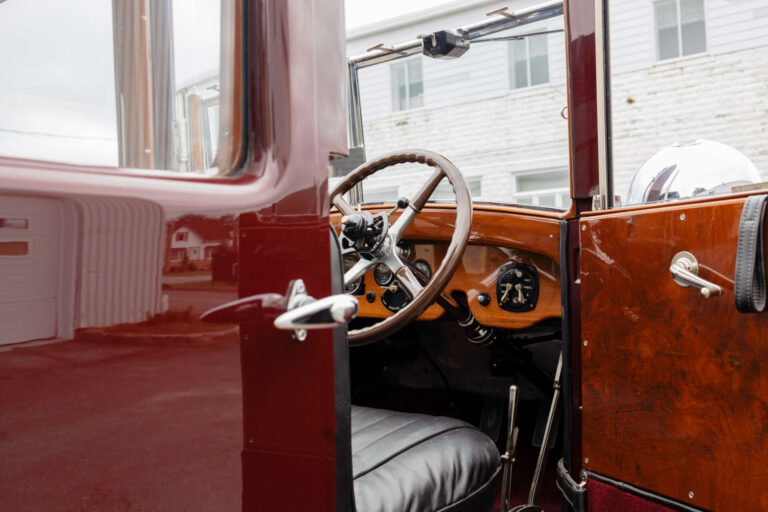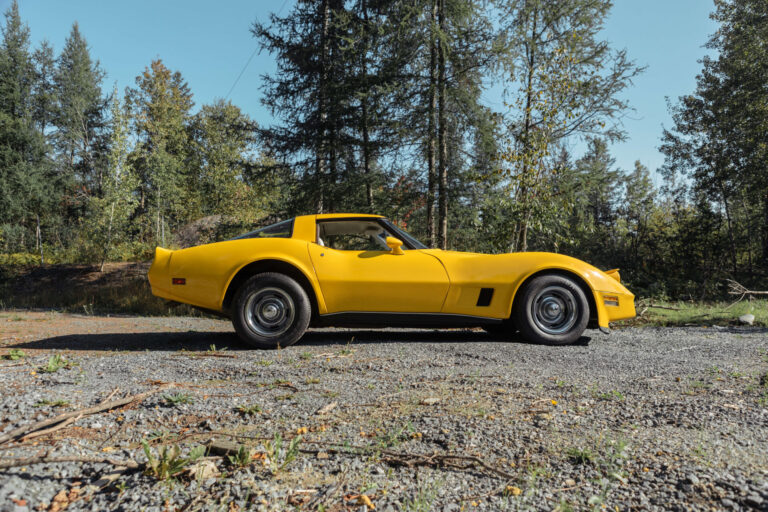The Automotive Dream “One man and his dream had not simply left the world with an engine and four wheels; Henry Ford and his Model T had influenced people's everyday lives - where they lived, how they spent their leisure time, even how they viewed themselves.” - Gary...
Lagonda 16/80 Special Six 1933

Photo credit - Good Vision Prod
Recent posts
An Introduction to Lagonda
Before Aston Martin “The history of Lagonda cars is synonymous with sophistication, opulence, and groundbreaking performance” - An article for Discovery UK Today, we may recognize the name Lagonda from its association with Aston Martin. Before these two brands...
Cadillac Model A 1903
The Standard of the World “No other American car on the market in the first decade of the century was constructed to higher standards than Cadillac.” - Stephen W. Sears in The Automobile in America Some of you may know that Cadillac has long had the slogan “Standard...
The Electric Starter
From the Crank to the Electric Starter “Notwithstanding the hilarious grandiosity of marketing materials from the early 20th century, many people believe the starter motor was the single car part that most transformed the automobile from a luxury fascination to...
English Touring
The car we present to you this week is the Lagonda 16/80 Special Six in the Demers Car Collection. Lagonda was a luxury British car brand that Aston Martin eventually absorbed. Through its association with Aston Martin, it is sometimes hard to remember Lagonda as standing on its own. But it did, and the model that we have for you this week was made in 1933, well before Aston Martin entered the picture. Keep reading to learn more about the context in which the Special Six was made, its particularities and a discussion on tourers.

Context
By the time Lagonda introduced the Special Six, its reputation as a car maker was already set. From period advertisements, they positioned themselves as “Britain’s Thoroughbred Car.” A thoroughbred is a pure-bred, racing horse. It has a long, known pedigree and is thoroughly trained and skilled. Playing on this idea of having a prestigious lineage and being associated with racing, the advertisement suggests that Lagonda cars were one of Britain’s long-established, respectable, sports brands. These weren’t just words, since the 1920s, the brand made quality cars with sporting character.
The model we see here was introduced in 1931 for model year 1932, the same year that they adopted their winged logo. In this period, Lagonda regularly adapted its models with variations happening year to year. A total of six models were offered in 1934, the last year of production of the 16/80. Although the cars were well-liked and well-made, some believe that the breadth of the line didn’t align with Lagonda’s production capacity. This would have contributed to the precarious financial position they soon found themselves in. On the other hand, others believe that these models helped pave the way towards the best cars Lagonda ever made, which would appear from 1934 on.

The 16/80
The 16/80 used the same low chassis as a previous model but had a different engine and renewed styling. A 2-liter, six-cylinder Crossley-designed engine powered it. Interestingly, since Lagonda held such high standards of quality, it is reported that each Crossley engine was disassembled, checked and rebuilt first. The engines were also modified before being installed into Lagonda cars to make sure they filled Lagonda’s high standards. The “Special Six” appellation comes from this new engine.
Consistent with the image of the brand, the vehicle was advertised as a luxury car with excellent performance. Period advertising also emphasized its comfort and durability. A criticism of this car was that it was too heavy to be performant. Although mass-produced vehicles were available at the time, the Lagonda was hand-made.
The one in the Demers Car Collection was professionally restored in the past. Unfortunately, we do not know the origin of its coachwork. Although some Lagondas at the time were dressed by coachbuilders, Lagonda made a lot of its own bodies. Interestingly, the doors on the car appear to have been cut to look more like a racing car. This isn’t surprising because racing enthusiasts could use the same cars they bought for everyday use to participate in motoring events.
This tourer body is a four-seater, but there are only two doors; one for the front passengers on the left side of the car, and one for the backseat passengers on the right side of the car. It may appear surprising that a four-passenger car was used for racing, but the roof could be lowered to cover the back seats, making the car more aerodynamic. Plus, looking at the suspension, we can see that it could be adjusted depending on which trail the car was used on.

What’s a Tourer?
We’ve discussed what is a Grand Tourer (GT) before, but what do we mean by Tourer? According to the Merriam-Webster dictionary, it is a vehicle that is “suitable for distance driving” in a style that has a folding roof, like the one on the phaeton, when we talk about vintage cars. When we talk about modern cars, it is most often a 2-door sedan. The modern definition is essentially a description of a GT. Tourers and GTs are very similar. The two are cars that combine luxury and speed. Both are cars that are great to look at, but also pack a great performance. Although sports cars also aim for performance, they aren’t as comfortable as touring cars or GTs or as geared toward endurance. Beacause Tourers reffer to vintage cars, we can assume that they are the predecessors of GTs.
The Special Six, with its folding roof, offered a sporting performance and engine and offered ample, comfortable seating for four passengers, which made it a Tourer.

What Now?
The production of the 16/80 ended in 1934. It is reported that Lagonda made a total of 261 of them, the Lagonda Club estimates that there are about 74 still found today. The Demers Car Collection is lucky to have one. As Aston Martin bought Lagonda in 1947, it is interesting to admire Lagonda cars and speculate on the influence they might have had on the Aston Martin brand. It is widely accepted that Aston Martin went on to make amazing Great Tourers from the late 1940s on.

The Nitty Gritty
- 1 991 cc, six-cylinder Crossley engine
- Twin SU carburetors
- Four-speed transmission
- Four-wheel mechanical brakes
- 10 ft wheelbase
- Max speed: 80 mph or about 125 km/h



